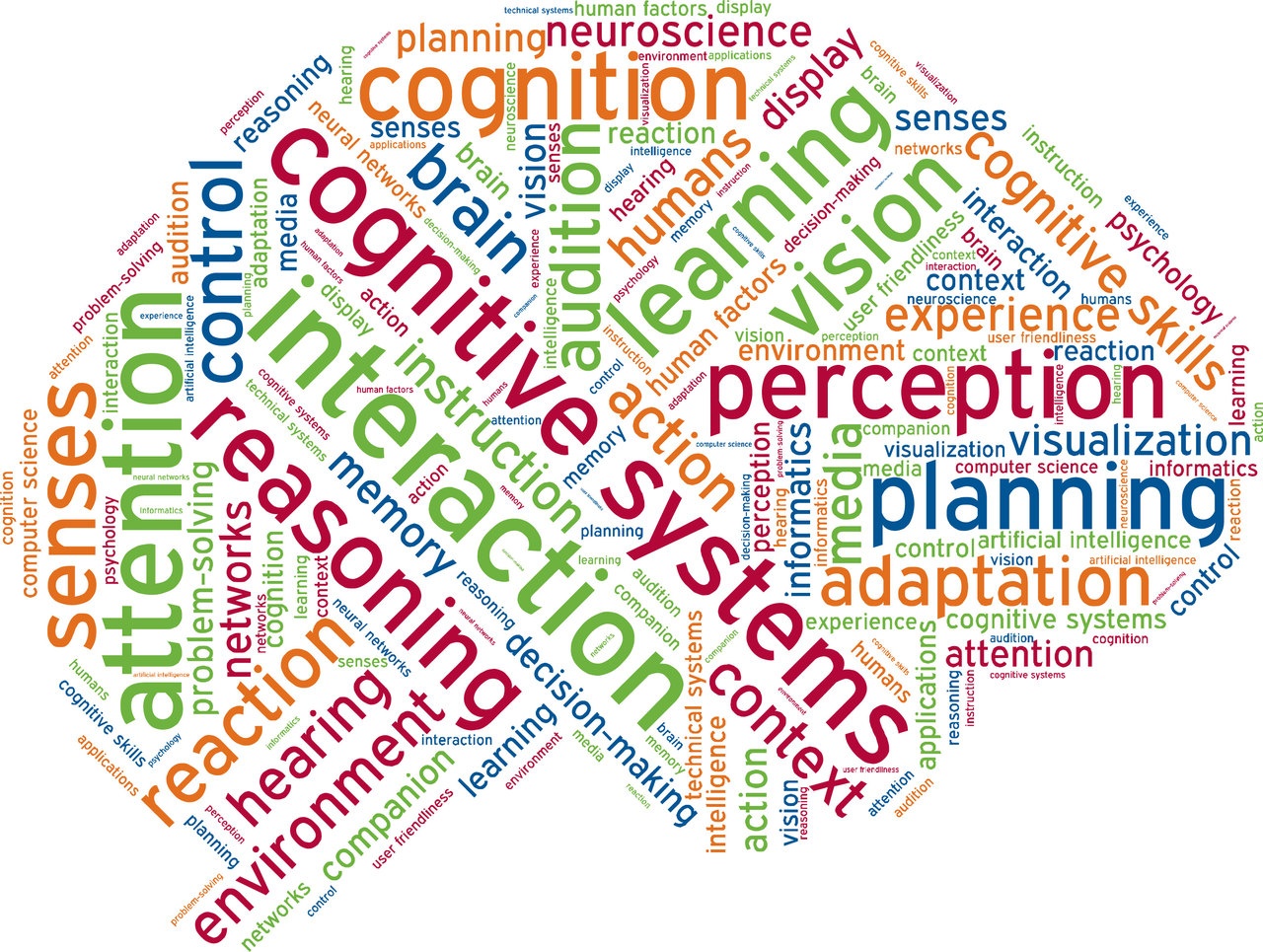OVERVIEW
This page is used to organize CRG work on clinical findings and observable entities related to cognitive functions and processes.
MAJOR FUNCTION, PROCESS, AND OTHER OBSERVABLE ENTITY CONCEPTS
Major Concepts | Commonly Used Terms | Working Definition (all currently in the brainstorming phase) |
|---|---|---|
| Cognitive function | Cognition | (draft in process) A cognitive function is a function that endows a person with the capacity to acquire knowledge about one's self and one's environment and to act on this knowledge. Cognition is comprised of other functions and processes including perception, learning, memory, reasoning, judging, planning, conceptualizing, comprehending, and language. The realization of this function is the ability to acquire and act on this knowledge.
|
| Cognitive process | Cognition | generic concept = any biological process that involves acquiring and acting on knowledge about one's environment (e.g., immune system, which learns to respond to antigens, etc.) concept in context of human behavior = process that involves acquiring and acting on knowledge specifically within the context of the nervous system and mind
|
| Cognitive state |
DEFINITIONS
Term | Source | Definition |
|---|---|---|
| Cognitive functioning | Accessed | cognitive functioningthe performance of the mental processes of perception, learning, memory, understanding, awareness, reasoning, judgment, intuition, and language. |
| Cognition | Accessed | cognitionn.1. all forms of knowing and awareness, such as perceiving, conceiving, remembering, reasoning, judging, imagining, and problem solving. Along with affect and conation, it is one of the three traditionally identified components of mind. 2. an individual percept, idea, memory, or the like. —cognitional adj. —cognitive adj. |
| Cognitive development | Accessed | cognitive developmentthe growth and maturation of thinking processes of all kinds, including perceiving, remembering, concept formation, problem solving, imagining, and reasoning. Various cognitive developmental theories exist that attempt to explain the mechanisms underlying such growth and maturation. Explanations may be in terms of stages of development in which the changes in thinking are relatively abrupt and discontinuous, or the changes may be viewed as occurring gradually and continuously over time. |
STAKEHOLDER GROUPS AND SUBJECT MATTER EXPERTS
| Name | Type | Description | Notes |
|---|---|---|---|
RESOURCES
| Name | Type | Description | Notes |
|---|---|---|---|
| DSM-I, DSM-II, DSM-III, DSM-III-R, DSM-IV, DSM-IV-R | Nosology | Previous editions of the the Diagnostic and Statistical Manual of Mental Disorders (DSM) | Useful for understanding the evolution concepts and specific terms used at different points in time |
| DSM-5, DSM-5 SCID | Nosology | Current edition of the Diagnostic and Statistical Manual of Mental Disorders (DSM) | Useful for understanding terms and concepts as they are currently designed to be used by clinicians |
| ICD-10, ICD-10-CM | Nosology | Preview editions of the the International Classification of Disorders (ICD) | Useful for understanding the evolution concepts and specific terms used at different points in time |
| ICD-11 | Nosology | Current edition of the the International Classification of Disorders (ICD) | Useful for understanding terms and concepts as they are currently designed to be used by clinicians |
| UMLS | Meta-Terminology | Unified Medical Language System (UMLS) |
PROJECT MILESTONES AND STATUS
| ID | Objective | Action Item |
|---|---|---|
| 1 | Define scope of work |
|
| 2 | Understand uses cases |
|
| 3 | Understand major conceptualizations of the concept |
|
| 4 | Establish contact with key stakeholders and other potential project contributors |
|
| 5 | Understand how concepts in the domain are currently represented in SNOMED |
|
| 6 | Perform gap analysis |
|
| 7 | Create new and modify existing concepts in SNOMED |
|
| 8 | Disseminate information about changes to SNOMED for concepts in the domain |
LINKS TO SITE MATERIALS
WORK PAGES
DISCUSSION THREADS
GRAPHICS AND GLOSSARIES

